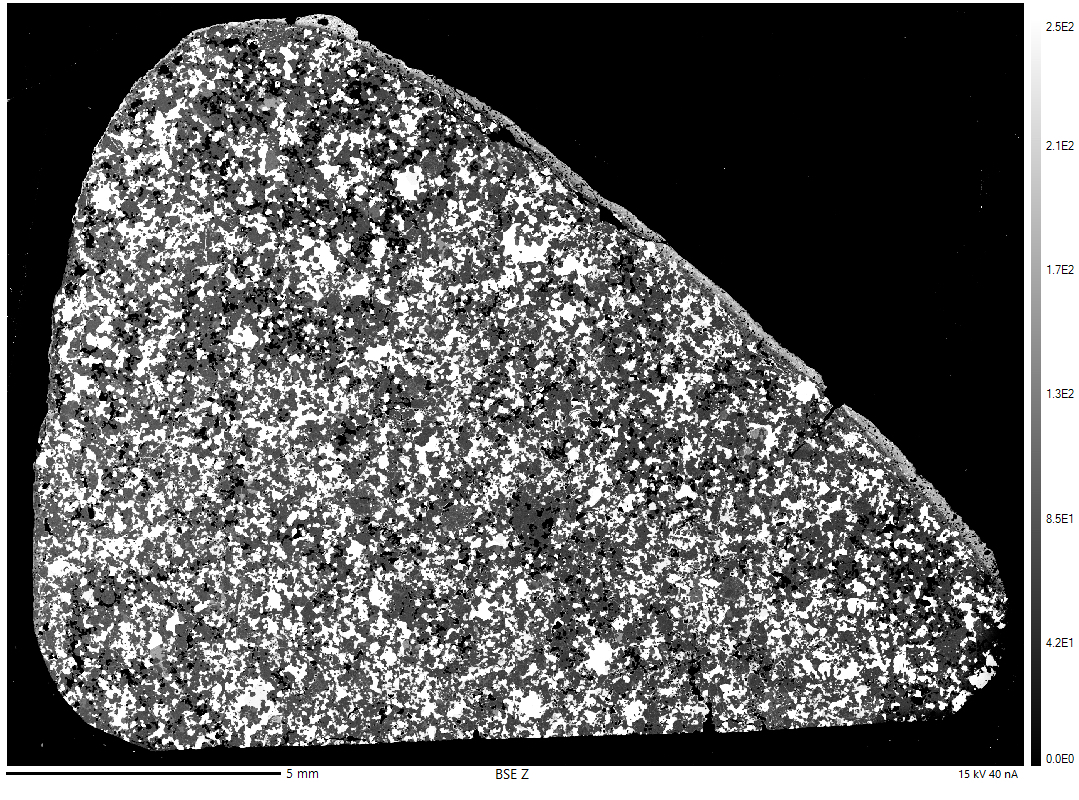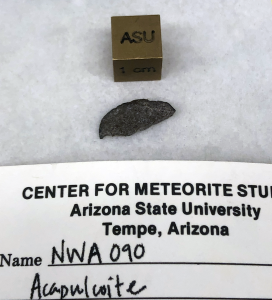Introducing the Tissemouminites
A new paper by Center alumna Dr. Alice Stephant, co-authored with Center Research Scientist Dr. Jemma Davidson, reports the identification of a new group of primitive achondrite meteorites, the tissemouminites.

The work redefines the petrological, mineralogical, and geochemical classification criteria for primitive achondrites through investigation of a group of eight meteorites with similarities to acapulcoites and winonaites.
The paper, Tissemouminites: A new group of primitive achondrites spanning the transition between acapulcoites and winonaites, uses multiple mineral compositions (olivine iron content, plagioclase potassium content, and FeO/MnO ratios) to separate the three meteorite groups without the use of oxygen isotope analyses (which often overlap and are not diagnostic), and indicates that the eight primitive achondrites, including Northwest Africa (NWA) 090 are most likely derived from a parent body distinct from winonaites and acapulcoites–lodranites. This new group of primitive achondrites, the tissemouminites, are named after the location that the type specimen, NWA 725, was found; Tissemoumine, Morocco.
Stephant was a Postdoctoral Researcher in the Center from 2015 to 2017 and is currently at the Institute for Astronomy in Rome where she holds a prestigious Marie Skłodowska-Curie Actions fellowship. Davidson joined the Center as an Assistant Research Scientist in 2018. While not at ASU at the same time, Drs. Stephant and Davidson struck up a collaboration due to their connection with the Center and overlapping research interests.
“Alice and I are both interested in understanding the nature and origin of planetary water. I am an admirer of her work and when we worked together on a study of water in the Black Beauty martian meteorite, we had a lot of fun” says Davidson. “Alice asked if I wanted to work with her again and I couldn’t say no!”

“The primary goal of my current project was to study volatiles in acapulcoites,” says Stephant. “Jemma did all the preliminary work and remarked that one acapulcoite from BCMS looked very primitive. Due to the pandemic and instrumentation delay, I started to study the petrography, mineralogy and geochemistry of this meteorite instead, and realized that, on top of being a very pristine primitive achondrite, it was neither an acapulcoite nor a winonaite!”

The NWA 090 meteorite in the study is from the BCMS collection, which Davidson prepared and performed preliminary analysis on. “When I looked at NWA 090, I noticed a relict chondrule, which was surprising as they’re extremely rare in primitive achondrites. I showed Alice and she very quickly identified many more relict chondrules and realized that we were looking at something very exciting.”
“By defining this new group of meteorites that originated from a parent body that was distinct from the winonaites and the acapulcoites, we are able to add information on the diversity of planetesimals presents in the early stage of the Solar System,” says Stephant. “But what I found most exciting about this study is to realize how many more opportunities there are to discover new groups of meteorites!”
The study is featured on the cover of the January 2023 volume of Meteoritics & Planetary Science, and is currently available online via open access. As Stéphant continues to study acapulcoites and lodranites, who knows what other exciting discoveries she will make.
Stephant A., Carli C., Anand M, Néri A., Davidson J., Pratesi G., Cuppone T., Greenwood R. C., Franchi I. A. (2023). Tissemouminites: A new group of primitive achondrites spanning the transition between acapulcoites and winonaites. Meteoritics and Planetary Science 58: 111–134.